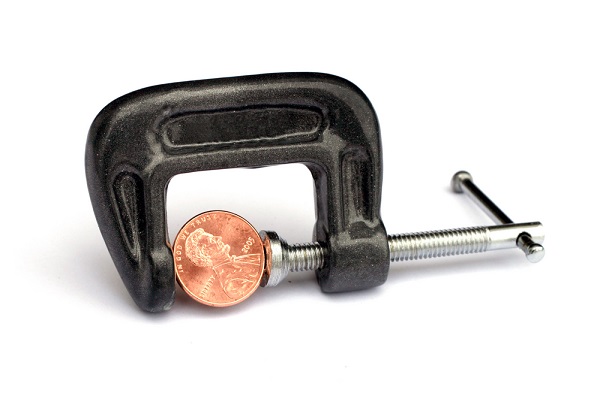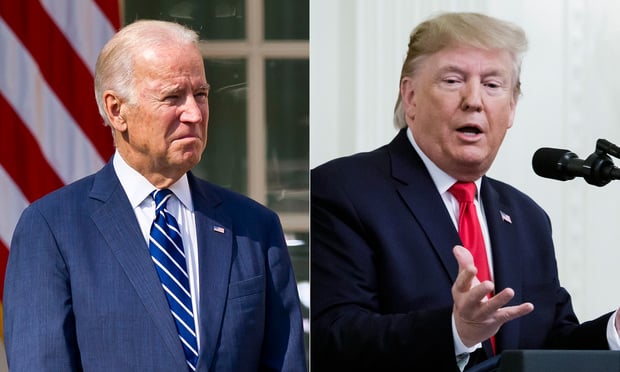 For the third yearin a row, the percentage of companies that offer high-deductibleplans as the sole option will decline in 2020. (Photo:Shutterstock)
For the third yearin a row, the percentage of companies that offer high-deductibleplans as the sole option will decline in 2020. (Photo:Shutterstock)
Everything old is new again. As open enrollment gets underwayfor next year's job-based health insurance coverage, some employeesare seeing traditional plans offered alongside or instead of theplans with sky-high deductibles that may have been their onlychoice in the past.
|Some employers say that, in a tight labor market, offering amore generous plan with a deductible that's less than four figurescan be an attractive recruitment tool. Plus, a more traditionalplan may appeal to workers who want more predictable out-of-pocketcosts, even if the premium is a bit higher.
|That's what happened at Digital River, a 650-personglobal e-commerce payment processing business based in Minnetonka,Minn.
|Related: Why it's time to rebrand the high-deductible healthplan
|Four years ago, faced with premium increases approaching doubledigits, Digital River ditched its traditional preferred providerorganization plan in favor of three high-deductible plans. Each haddifferent deductibles and different premiums, but all linked tohealth savings accounts that are exempt from taxes. This year,though, the company added back two traditional preferred providerplans to its offerings for workers.
|Even with three plan options, "we still had employees who saidthey wanted other choices," said KT Schmidt, the company's chiefadministrative officer.
|Digital River isn't the only company broadening its offerings.For the third year in a row, the percentage of companies that offerhigh-deductible plans as the sole option will decline in 2020,according to a survey of large employers by the National BusinessGroup on Health. A quarter of the firms polled will offer theseplans, sometimes called consumer-directed plans, as the only optionnext year, down 14 percentage points from two years ago.
|That said, consumer-directed plans are hardly disappearing.Fifty-eight percent of covered employees worked at companiesthat offered at least one high-deductible health plan in 2019,according to an annual survey of employer health benefits releasedby the Kaiser Family Foundation last month. That was second only tothe 76 percent of covered workers who were at firms thatoffered a PPO plan. (KHN is an editorially independent program ofthe foundation.)
|When Digital River switched to all high-deductible plans for2016, the firm put some of the $1 million it saved into the newhealth savings accounts that employees could use to cover theirout-of-pocket expenses before reaching the deductible. Employeescould also contribute to those accounts to save money for medicalexpenses. This year the deductibles on those plans are $1,850,$2,700 and $3,150 for single coverage, and $3,750, $5,300 and$6,300 for family plans.
|The company put a lot of effort into educating employees abouthow the new plans worked, said Schmidt. Premiums are typicallylower in high-deductible plans. But under federal rules, untilpeople reach their deductible, the plans pay only for specifiedpreventive care such as annual physicals and cancer screenings andsome care for existing chronic conditions.
|Enrollees are on the hook for everything else, including mostdoctor visits and prescription drugs. In 2020, the minimumdeductible for a plan that qualifies underfederal rules for a tax-exempt health savings account is $1,400for an individual and $2,800 for a family.
|As their health savings account balances grew, "more peoplemoved into the camp that could see the benefits" of thehigh-deductible strategy, Schmidt said. Still, not everyone wantedto be exposed to costs upfront, even if they ended up spending lessoverall.
|"For some people, there remained a desire to pay more to simplyhave that peace of mind," he said.
|Digital River's PPOs have deductibles of $400 and $900 forsingle coverage and $800 and $1,800 for families. The premiums aresignificantly more expensive than those of the high-deductibleplans.
|In the PPO plan with the $400/$800 deductible, the employee'sportion of the monthly premium ranges from $82.37 for singlecoverage to $356.46 for an employee plus two or more familymembers. The plan with the $2,700 deductible costs an employee$21.11 for single coverage and the $5,300 deductible plan costs$160.29 for the employee plus at least two others.
|But costs are more predictable in the PPO plan. Instead of owingthe entire cost of a doctor visit or trip to the emergency roomuntil they reach their annual deductible, people in the PPO plansgenerally owe set copayments or coinsurance charges for most typesof care.
|When Digital River introduced the PPO plans this year, about 10%of employees moved from the high-deductible plans to thetraditional plans. Open enrollment for 2020 starts later this fall,and the company is offering the same mix of traditional andhigh-deductible plans again for next year.
|Adding PPOs to its roster of plans not only made employees happybut also made the company more competitive, Schmidt said. Two ofDigital River's biggest competitors offer only high-deductibleplans, and the PPOs give Digital River an edge in attracting toptalent, he believes.
|According to the survey by the National Business Group onHealth, employers that opted to add more choices to what theyoffered employees typically chose a traditional PPO plan. Membersin these plans generally get the most generous coverage if they useproviders in the plan's network. But if they go out of network,plans often cover that as well, though they pay a smallerproportion of the costs. For the most part, deductibles are lowerthan the federal minimum for qualified high-deductible plans.
|Traditional plans like PPOs also give employers more flexibilityto try different approaches to improve employees' health, saidTracy Watts, a senior partner at benefits consultant Mercer.
|"Some of the newer strategies that employers want to try justaren't [health savings account] compatible," said Watts. The firmsmight want to pay for care before the deductible is met, forexample, or eliminate employee charges for certain services.Examples of these strategies could include direct primary carearrangements in which physicians are paid a monthly fee to providecare at no cost to the employee, or employer-subsidizedtelemedicine programs.
|The so-called Cadillactax, a provision of the Affordable Care Act that would impose a40% excise on the value of health plans that exceed certain dollarthresholds, was a driving force behind the shift towardhigh-deductible plans. But the tax, originally supposed to takeeffect in 2018, has been pushed back to 2022. The House passed abill repealing the tax in July, and there is a companion billin the Senate.
|It's unclear what will happen, but employers appear to be takingthe uncertainty in stride, said Brian Marcotte, president and CEOof the National Business Group on Health.
|"I think employers don't believe it's going to happen, andthat's one of the reasons you're seeing [more plan choices]introduced," he said.
|Kaiser HealthNews (KHN) is a national health policy news service. It is aneditorially independent program of the Henry J. Kaiser Family Foundation whichis not affiliated with Kaiser Permanente.
|Readmore:
Complete your profile to continue reading and get FREE access to BenefitsPRO, part of your ALM digital membership.
Your access to unlimited BenefitsPRO content isn’t changing.
Once you are an ALM digital member, you’ll receive:
- Critical BenefitsPRO information including cutting edge post-reform success strategies, access to educational webcasts and videos, resources from industry leaders, and informative Newsletters.
- Exclusive discounts on ALM, BenefitsPRO magazine and BenefitsPRO.com events
- Access to other award-winning ALM websites including ThinkAdvisor.com and Law.com
Already have an account? Sign In
© 2024 ALM Global, LLC, All Rights Reserved. Request academic re-use from www.copyright.com. All other uses, submit a request to [email protected]. For more information visit Asset & Logo Licensing.








